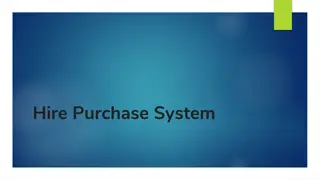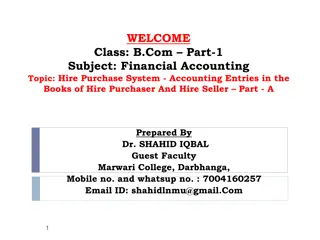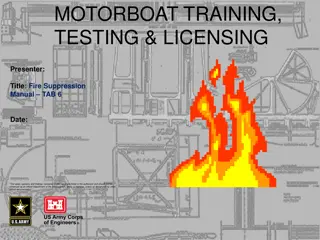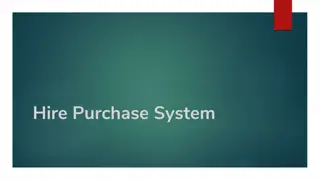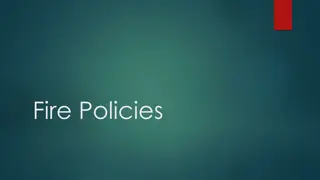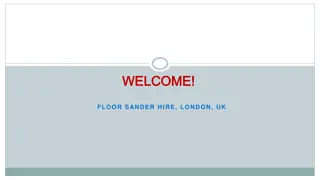When to Hire and When to Fire: Key Concepts and Strategies
Dynamics of hiring and firing in terms of marginal productivity, revenue, and cost. Learn how firms make decisions and optimize their workforce for profit maximization.
Download Presentation

Please find below an Image/Link to download the presentation.
The content on the website is provided AS IS for your information and personal use only. It may not be sold, licensed, or shared on other websites without obtaining consent from the author. Download presentation by click this link. If you encounter any issues during the download, it is possible that the publisher has removed the file from their server.
E N D
Presentation Transcript
When to Hire and When to Fire? Andrew Philipp
Firms will keep hiring workers until the cost of hiring an additional worker equals the additional revenue made by that worker Main Idea
Key Concepts Marginal Product of Labor (MPL)- The change in output resulting from employing an additional until of labor Marginal Revenue Product- MPL x Marginal revenue received from selling an additional unit of output Marginal Factor Cost of Labor- The additional cost of hiring an additional worker (wage) MPL = MFC- The profit maximization point
How Many Workers to Hire in a Perfectly Competitive Market
Step 1 Number of Workers 0 1 2 3 4 5 6 7 Output Per Hour Marginal Product MP= output per hour # of Workers 0 2 6 12 17 21 24 23 0 2 4 6 5 4 3 -1
Step 2 Number of Workers Output Per Hour Marginal Product Product Price Marginal Revenue Product 0 8 16 24 20 16 12 -4 0 1 2 3 4 5 6 7 0 2 6 12 17 21 24 23 0 2 4 6 5 4 3 -1 x $4 $4 $4 $4 $4 $4 $4 $4 = MRP= P x MP
Step 3 Worker Wage = $18 Number of Workers 0 1 2 3 4 5 6 7 Output Per Hour Marginal Product Product Price Marginal Revenue Product 0 8 16 24 20 16 12 -4 Marginal Factor Cost $18 $18 $18 $18 $18 $18 $18 $18 0 2 6 12 17 21 24 23 0 2 4 6 5 4 3 -1 x $4 $4 $4 $4 $4 $4 $4 $4 = MRP = MFC
In Derived Demand Derived Demand- The demand for an input (labor) that makes a consumer good
There is a Derived Demand in the resource market for the labor that produces the good or service Product Market Resource Market
Product Market If the demand for the product increases in the product market the demand curve shifts to the right, causing points P and Q shift
Because the quantity increases in the product market the derived demand in the resource market for labor increases Resource Market (Labor)
2007 AP FRQ Questions- http://www.collegeboard.com/prod_downloads /ap/students/economics/ap07_frq_Microecono mics.pdf Answer- http://www.collegeboard.com/prod_downloads /ap/students/economics/ap07_sg_micro.pdf
1) The profit maximizing rule for determining the most profitable number of workers to hire is: A.Marginal revenue = marginal cost rule B.Marginal revenue product = marginal resource cost rule C.Marginal revenue = marginal profit rule D.Marginal resource cost = wage rule
2) The marginal product of an output is the: A.the item that has less quality than the other items of output B.the total ouput as an additional worker is hired C.the total selling revenue as an additional worker is hired D.the change in total output that is produced when 1 additional worker is hired.
3) The marginal resource cost is: A.The change in selling price as one more unit is sold. B.The change in revenue as the output from one more worker is sold. C.The cost of hiring all the workers used in the production of a product. D.The cost of hiring one more unit of input.
Real World Links In Derived Demand- http://www.nytimes.com/2011/09/10/business/economy/in-the-real-world- will-the-jobs-plan-make-a-difference.html?pagewanted=all http://www.forbes.com/sites/petercohan/2011/09/03/why-do-companies- hire/
